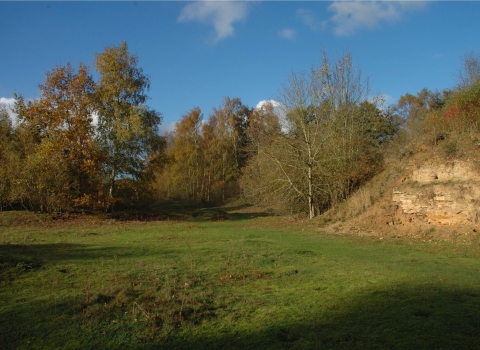
Parsonage Moor by Jim Asher
Parsonage Moor
Location
Know before you go
Dogs
When to visit
Opening times
Open at all timesBest time to visit
March to AugustAbout the reserve
Wetland wonders
This atmospheric fenland reserve is particularly rich in plants for its size - more than 300 different species have been recorded here. The carefully managed fen, a nationally rare habitat, is fed by several springs. The tussocky landscape includes an abundance of black bog-rush and blunt-flowered rush and many uncommon fenland mosses. Other wetland habitats are large areas of reedbed, open water, wet woodland and ancient woodland, made up of alders and willows.
Fenland flowers
Extensive areas of peat, fed by limey water, have resulted in a mix of soils and plants. Unusually, there are both 'lime-loving' and 'lime-hating' plants here. Many orchids can be seen including southern marsh-orchid and the nationally-scarce narrow-leaved marsh orchid, all lime-loving flowers. Many small sedges can be found here, including long-stalked yellow-sedge. Another lime-hater, the graceful grass-of-Parnassus, produces large white flowers on a single stem in August and September.
Predatory plants
Among the lime-hating plants are some intriguing insectivorous species. Butterwort is the most common of these and has violet-like flowers and traps insects on its sticky, yellow-green leaves, while bladderwort traps insects underwater. This site is also excellent for birds and insects. Look out for the day-flying scarlet tiger moth, and dragonflies and damselflies, including the nationally-rare southern damselfly. Rare soldier flies are also found here including the clubbed general and silver colonel.
Ruskin Reserve, a Rothschild Reserve
In May 1912, the banker and expert naturalist, Charles Rothschild founded the Society for Promotion of Nature Reserves – the organisation that would become the Wildlife Trusts. His vision was to identify and protect the best places for wildlife, and these became known as Rothschild Reserves. Parsonage Moor is part of what Oxford botanists at the time knew as the Ruskin Reserve.
Things to do
Explore Cothill Fen, which includes Parsonage Moor, one of the most diverse wildlife areas in Oxfordshire, by downloading our circular walk leaflet.
Species
Contact us
Environmental designation

Volunteer with us
Our volunteers help us in so many ways - by working on nature reserves, helping at visitor centres, leading walks, training others and much, much more. Without our volunteers we would not be able to carry out much of our work.
For more information about volunteering for BBOWT, please get in touch with volunteering@bbowt.org.uk



